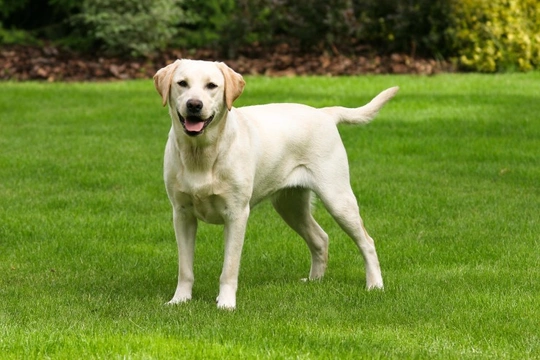
Exercise-induced collapse DNA testing for the Labrador Retriever
The Labrador retriever dog breed is hugely popular in the UK and all across the world, and they’ve long been the most popular large dog breed here too. The versatility, intelligence, high energy levels and lovely temperaments of the average Labrador mean that they’re in great demand among owners of all types, from families with young children to older people, and they are also widely used across a range of different types of working roles too.
Labradors tend to be a healthy, hardy and robust breed that is very active and not afraid of getting mucky and wet, but there are also a number of hereditary health issues that are found more commonly within this dog breed than in most others.
One such condition is called exercise-induced collapse, and there is a DNA test available for Labrador retrievers that enables their owners to find out the status of their own dogs, and this is important for anyone who is considering breeding from their own Labrador to consider. DNA testing for exercise-induced collapse in the Labrador retriever must be performed on both dogs within any prospective mating match in order to determine the health of their litter, and any prospective Labrador puppy buyer should ask the breeder if their dogs were tested, and ask to see the results.
In this article we will explain how exercise-induced collapse in the Labrador retriever is inherited, and how to get a dog DNA tested to find out their status. Read on to find out more about exercise-induced collapse DNA testing for Labradors.
What is exercise-induced collapse?
Exercise-induced collapse is the name given to a group of symptoms that can present in Labrador retrievers during or after exertion, and it is a condition that is slowly becoming more and more widely spread across the breed as a whole.
Dogs with exercise-induced collapse are generally intolerant of high-energy, high-impact or otherwise strenuous exercise, and will commonly collapse after just a few minutes of such activity. After collapse, most dogs will recover within around half an hour, but less commonly, the condition can be fatal after an attack.
The symptoms of exercise-induced collapse in the Labrador retriever usually begin to become apparent within just a few minutes of beginning to exercise hard, and usually begin with an unstable or wobbling gait. A collapse can usually be avoided if exercise is stopped at this point, but if continued, collapse is usually unavoidable.
Dogs with exercise-induced collapse may also tend to suffer from muscle weakness and be prone to overheating or running a high temperature, although this is not always the case.
Generally, a combination of higher than normal temperatures and overexcitement in the dog themselves are required to cause exercise-induced collapse in the Labrador retriever, and it can be quite variable in terms of whether any combination of factors may induce a collapse or not.
Naturally, Labrador retriever exercise-induced collapse means that owners of affected dogs need to take special steps to avoid collapses and provide for the dog’s need for exercise without risking their health and wellbeing.
The condition cannot be cured or reversed, and can only be passed from dog to dog by means of heredity.
Generally, exercise-induced collapse begins to show symptoms in dogs for the first time anywhere between around six months and three years of age, although less commonly it can develop a lot later, potentially not until the dog in question reaches old age.
How is exercise-induced collapse inherited in the Labrador retriever?
Labrador retriever exercise-induced collapse is a type of autosomal recessive hereditary disorder, which happens when a certain gene mutation is present. However, inheriting just one mutated gene from one parent won’t cause the affected form of exercise-induced collapse on its own; the combination of genes from both sides of the parentage dictates the status of any given dog.
If you are planning to breed from your Labrador retriever, you should have both parent dogs tested prior to going ahead. By knowing the parental status you can identify the status of their litter, as follows:
- Two affected parents will have an affected litter.
- Two clear parents will have a clear litter.
- Two carrier parents will have a litter of 50% carriers, 25% affected and 25% clear.
- A clear parent and a carrier parent will result in a litter of 50% clear and 50% carrier pups.
- An affected parent and a carrier parent will result in a litter of 50% affected and 50% carrier pups.
- A clear parent and an affected parent will have a litter of carriers.
How can you get a dog DNA tested for the markers of exercise-induced collapse?
Any vet of your choosing can take a DNA sample from your Labrador by means of a cheek swab or blood sample, and currently there is only one laboratory authorised to test samples from Labrador retrievers in Europe, which is Laboklin.
Your dog’s DNA sample needs to be sent off by your vet to Laboklin, who will perform the test and return a full report on the status of the tested dog.



